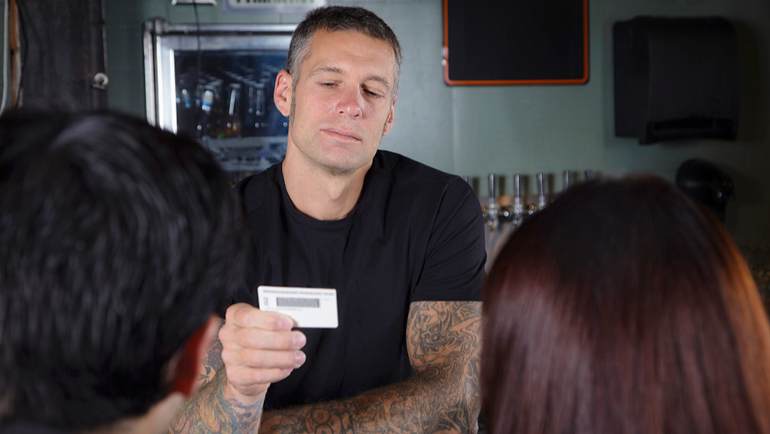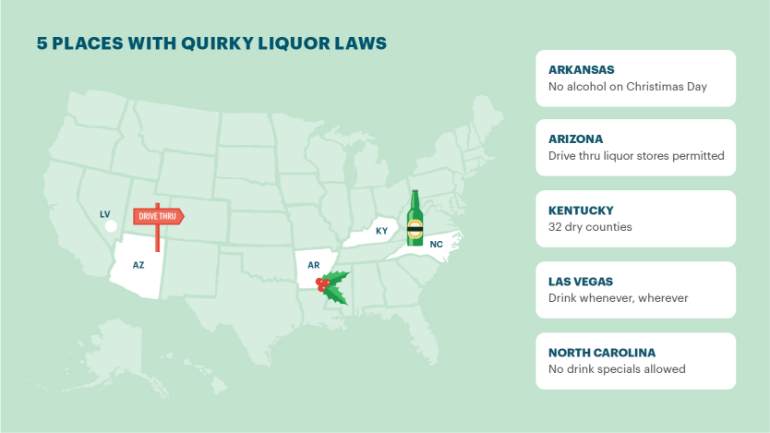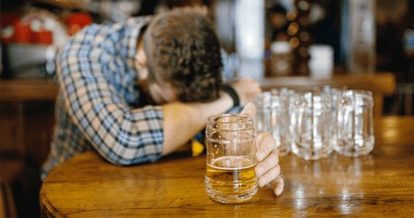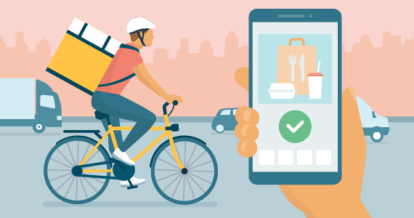How can a bar lose its liquor license? Turns out it’s pretty easy. Anything from your bartenders not having their bartending license to overserving a drunk customer can get you into some serious trouble.
Picture this: it’s Friday night and your bar is bustling. You know the vibe in your venue is just right for unwinding after work, and everyone is there for the flowing drinks – drinks that are under a lot of regulation.
Different cities and states have different rules, but there are overarching similarities that govern alcohol delivery and alcohol sales in restaurants. No matter where you live, you need a liquor license.
But getting a liquor license isn’t the end of the game. Abiding by the rules is ongoing, and there are some seemingly small things that can land you, your bar, and even your bartenders in hot water.
A lost liquor license is every restaurant’s greatest fear. This article will cover six serious ways you can lose your restaurant’s liquor license:
- Overserving
- Disorderly Conduct
- Serving Minors
- Selling at Unauthorized Times
- Drinking in Unlicensed Areas
- Untrained Service Staff
1. Overserving
Continuing to serve a person who is already inebriated can lead to some very serious consequences. Intoxication that leads to an accident, personal injury, or at worst, death, can mean that your bar, your bartender, and even you personally could be held liable and forced to pay damages. You could lose your liquor license for good.
So make sure that all of your staff are hyper-aware of the consequences and comfortable refusing to serve a patron under the influence.
Most bartender training will cover ways to spot an intoxicated customer, but the signs should be reviewed regularly with all staff who are working in proximity to people who are drinking.
If you aren’t sure what to look for, here are some ways to spot a customer who is too drunk:
- Slurred speech
- Confusion or disorientation
- Loss of coordination
- Delayed reflexes
- Slow, irregular breathing
- Unresponsiveness
- Nausea and vomiting
The best tool you have against overserving is an experienced bartender. Make sure you’re hiring people who have a bartending license. They’ll be able to help you minimize the risk of overserving, keeping your bar and liquor license safe.
2. Disorderly Conduct
Unlawful gambling, violence, public drunkenness, and disturbing the peace are all reasons for your liquor license to be reviewed and revoked. If your venue sees its share of outbursts and aggression, it’s high time to review how much patrons are being served and then work with your staff to establish an environment of respect and dignity. If patrons still want to brawl, it may be necessary to refuse service or ask belligerent customers to find another watering hole.
It may be impossible to predict who will become violent. A customer may have had a lot to drink before they entered your bar, or maybe they haven’t eaten or don’t handle their liquor very well. With all these factors at play, it can be tough to gauge when to cut them off.
Here are some ways to de-escalate a potentially violent situation:
- Invite the customer to talk away from other guests
- Stay as calm and friendly as possible
- Don’t cut the customer off in front of others
- Offer the customer some water
- Listen to what the customer is saying and feeling, but be firm
- Make sure the customer has a safe ride home – talk to their friends or offer to call a cab
Remember – it’s never worth putting you, your staff, or others at risk! If the situation escalates beyond your control or the patron insists on driving despite being intoxicated, it’s time to call the police.

3. Serving Minors
This is a big no-no everywhere. The legal drinking age in the United States is 21 years old, and serving underage customers comes with consequences. Checking photo ID before service is the best way to be sure that everyone in your venue enjoying a libation is legally allowed to do so.
You and your staff need to know what can pass for fake identification. Here’s how to quickly spot a fake ID
- Know the distinct characteristics of your state’s ID so you can spot one that doesn’t fit
- Check the microprint with a magnifying glass
- Check the edges of the ID for peeling
- Question whether the person in the photo looks old enough to be the person on the ID
- Check that the face shape and characteristics are the same
- Look for signs of anxiety in the cardholder
If unsure, prompt the person with questions about their zip code, how to spell their middle name, or their horoscope – and don’t serve them until you’re sure they are of age.
It’s important to note that just because you need to be 21 to drink doesn’t mean you need to be 21 to serve. In most states, the legal age to serve and handle alcohol is 18, with the following exceptions:
- Maine: 17 (if a supervisor who is 21 or over is present)
- Alabama, Arizona, Arkansas, Idaho, Indiana, Kentucky, Nebraska, New Mexico, North Dakota, Ohio: 19
- Nevada, Utah: 21
Some of these states may require minors to obtain a special permit or be accompanied by a person who is 21 or over. Other states might restrict minors from bartending but permit them to sell alcohol in other locations, like a grocery store.
4. Selling at Unauthorized Times
Your liquor license is likely linked to specific sales times. If you’re still selling beer at 2:15am while 2:00am is your license shut down time, you can get into pretty deep trouble. When the time comes to close up, that means no more pouring.
Make sure you’re familiar with pouring rules in your area, as they vary between locations. Even within the same state, different cities and counties can have their own regulations. Some examples of odd pouring rules are:
- In Maine, you can’t sell liquor before 9:00 am on Sunday – unless it’s St. Patrick’s Day. Then you can start selling at 6:00 am.
- In Indiana, you can’t serve liquor at all if you don’t have food services available for at least 25 people. The bare minimum requirement for food is hot soups, hot sandwiches, coffee, milk, and soft drinks.
- In Texas, you can only pour on Sundays before noon if the drink is paired with food.
- In Utah, alcohol must be poured behind a barrier or curtain to prevent young eyes from seeing the alcohol mixed.
Knowing these small details can mean the difference between keeping and losing your liquor license.
5. Drinking In Unlicensed Areas
Washrooms, food preparation areas, storage areas, stairs, hallways, and outside areas are all places that serving or consuming alcohol is possibly prohibited in your establishment. And guess what? It’s your responsibility to make sure that guests aren’t wandering into these areas with a drink in hand.
Posting signs to remind patrons to keep their drinks inside, refrain from bringing them into restrooms, and keep them off the stairs is a good deterrent. You’ll want to tell staff that there are no exceptions to this rule, because your business is on the line.
6. Untrained Service Staff
How do you get your bartending license? Most states have a ServSmart or SmartServe program that requires all staff who will be serving alcohol to complete the certification. And if they’re caught serving without state-required training – you’re going to be the one in the hot seat.
The good news is that state-trained staff who have received their certification have been trained to spot the signs of intoxication, so they know how and when to refuse service in a diplomatic way. So check for the required certification before hiring – because a bartending license is a must.
How to Get a Bartending License
So if you or your bartenders need to get certified, how do you go about doing it?
While a bartending license to handle alcohol is pretty universal, each city has its own governing boards, certifications, and license titles.
Here’s how to get your bartending license in select cities:
New York: You have to be at least 18 years old to serve alcohol in New York. New York trains their bartenders through the New York Alcohol Training Awareness Program (ATAP), which covers two types of certification check their website for a list of certified ATAP schools). You can get on-premise serving courses if you plan to work at a bar or restaurant, or off-premise serving courses if you’re working in a convenience store, liquor store, or other off-premise sales small business.
Chicago: Chicago participates in Illinois’ Basset Certification (short for The Beverage Alcohol Sellers and Servers Education and Training Program). The Illinois Liquor Control Commission has a list of certified Basset course providers in Chicago here. The program is divided into an on-premise course that focuses on areas where the alcohol is consumed and served in the same space, and an off-premise course for people working where alcohol is served and sold but not consumed. There is also the option of taking a combination course that highlights both.
Austin: Liquor laws in Austin are governed by the Texas Alcoholic Beverage Commission (TABC), and everybody who pours alcoholic beverages is required to get a license from them. It is also recommended, but not required, to take training to get a server certification. You can find a list of TABC approved courses here. There isn’t a minimum age for taking the server training courses, but there are age restrictions on serving in bars, restaurants, or selling alcohol in store.
Los Angeles: The Department of Alcoholic Beverage Control (ABC) requires that workers in businesses that sell or serve alcohol complete the Responsible Beverages Service Training (RBS). See an approved list of program providers here.
Toronto: Bartenders in Toronto need their Smart Serve license, which is mandated by the Alcohol and Gaming Commission of Ontario (AGCO). Smart Serve is required if you serve, sell, or handle alcohol in a licensed establishment. (Keep in mind, you have to be 18 years old to legally serve alcohol in Ontario.)
If your bar is located outside one of these cities, make sure you and your employees are taking a course that is approved by your local liquor control board. If your bartenders’ license is from a non-approved school, you’ll be at risk of losing your business’ liquor license.

Liquor License Highlights By State
You might think you’re playing by the rules, but there are several (and at times quirky) stipulations that could cause you to lose your license for innocent reasons. Due to the state-governed — or even county-governed — nature of liquor laws, restrictions vary greatly from county to county.
Does your county allow you to serve alcohol on Sundays? What about election day? Can you even serve alcohol at all? While the legal drinking age in the U.S. stands at 21 across the board, each state is subject to their own unique liquor-law “isms” — like permitting minors to drink alcohol in the company of a parent or for religious reasons.
Here is a list of some of the most notable clauses from across the country that may affect your bar (in alphabetical order).
Alabama liquor laws: With the exception of some private clubs and counties, liquor sales are prohibited between noon and midnight on Sundays. While consumption is still legal state-wide, Alabama has 26 dry counties.
Arizona liquor laws: Drive-thru liquor stores are allowed, but all-you-can-drink “beer-busts” are illegal. Arizona also has the most strict DUI penalties of any state, mandating those convicted with a DUI to have an interlock installed on their car for a year.
Arkansas liquor laws: Alcohol sales are mostly prohibited on Sundays, except in a few local circumstances. And hold the eggnog and rum — no alcohol sales are permitted on Christmas Day.
Florida liquor laws: Alcohol sales are prohibited between 12:00am – 7:00am, unless the county decides otherwise.
Hawaii liquor laws: A cabaret license allows bars to stay open until 4:00am, while normal a license expires at 2:00am.
Illinois liquor laws: Hours of operation are at the discretion of individual municipalities. Illinois liquor laws vary greatly from county to county. For example, 24-hour bars are permitted in Cicero while only a few 21- or 22-hour bars exist in Cook County.
Indiana liquor laws: On Sundays, sales are limited to on-premises in restaurants, wineries, breweries, and distilleries; however, if issued a permit, those establishments may allow carry-out sales.
Kansas liquor laws: The state has 29 dry counties. Fifty-nine counties require businesses to make at least 30% of revenue from food sales. Only 17 counties allow general on-premises sales.
Kentucky liquor laws: The state has approximately 39 dry counties and 22 moist counties.
Louisiana liquor laws: Twenty-four hours bans commonly imposed by the state. Also, despite counterintuitive logic, you can sell frozen daiquiris via drive-thru, but patrons can be arrested for driving with an open container with the straw in the cup.
Massachusetts liquor laws: On-premise liquor sales from 8:00am – 2:00am by state law unless otherwise stated by the county. Chains are limited to seven licenses. Out-of-state or Canadian driver’s licenses do not grant the restaurant’s legal protection if accepted as proof of age. There is also a limit of two drinks per person and pitchers must be shared by at least two people. No free drinks, prize drinks, or drinking contests.
Missouri liquor laws: Certain bars in Kansas and St. Louis can double as liquor stores. Open containers are permitted outside of bars.
Nebraska liquor laws: Booze sales are restricted before noon on Sundays.
Nevada liquor laws: Vegas, baby! Twenty-four hour liquor sales allowed. Almost anything goes!
New Mexico liquor laws: New Mexico issues an additional license for alcohol on Sundays from noon until midnight. Serving to a minor is a felony except when in the company of a legal guardian, if in the company of their adult spouse, or for religious reasons. So make sure your service staff are really strict about checking IDs.
New York liquor laws: Some counties upkeep Sunday prohibition. There are 12 dry towns in New York.
North Carolina liquor laws: No “happy hour.” No “buy one get one free.” No “ladies night.” (No fun?) Restaurants and bars will have to get creative with promotions and be extra careful to ensure their marketing efforts abide by the law. Any promotion of alcohol must be carefully vetted.
Rhode Island liquor laws: Bars may stay open until 2:00am in Providence only on Friday and Saturday nights and nights before a holiday.
Tennessee liquor laws: Sales of wine and liquor are limited to on-premises in restaurants on Sundays. Great for restaurants and thirsty patrons.
Texas liquor laws: If serving alcohol between 10:00am and noon on Sunday, drinks must be accompanied by food to the customer. Eleven counties are completely dry.
Utah liquor laws: Hours vary according to type of booze being sold: noon to midnight for liquor, 10:00am to 1:00am for beer. Bars are the exception and may serve liquor from 10:00am to 1:00am. Restaurants must buy alcohol from the state-controlled store at retail prices. No alcohol is served in restaurants without food. Private alcohol imports are prohibited.
West Virginia liquor laws: Beer/wine and liquor sales are allowed at two different times:
Beer/wine on Monday to Saturday: 7:00am – 2:00am; Sunday: 1:00pm– 2:00am
Liquor: Monday to Saturday: 8:00am – midnight, Sunday: Prohibited.
Since the state has a monopoly on wholesale spirits, bars and clubs are only allowed to purchase liquor from stat-contracted private stores.
It’s important to make sure that you are fully aware of the expectations, responsibilities, and legal requirements of serving alcohol in your specific city and state. Keep in mind that ignorance of the law isn’t a viable excuse and won’t get you out of trouble. When unsure, always play it safe with alcohol.
Need to promote your bar?
Download your free employee handbook template
Sign up for our free weekly TouchBistro Newsletter







